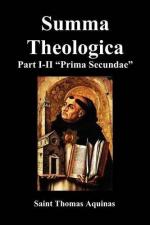children of Israel.” The manna was kept
in the ark to remind them of the benefit conferred
by God on the children of Israel in the desert; wherefore
it is written (Ex. 16:32): “Fill a gomor
of it, and let it be kept unto generations to come
hereafter, that they may know the bread wherewith
I fed you in the wilderness.” The candlestick
was set up to enhance the beauty of the temple, for
the magnificence of a house depends on its being well
lighted. Now the candlestick had seven branches,
as Josephus observes (Antiquit. iii, 7, 8), to signify
the seven planets, wherewith the whole world is illuminated.
Hence the candlestick was placed towards the south;
because for us the course of the planets is from that
quarter. The altar of incense was instituted
that there might always be in the tabernacle a sweet-smelling
smoke; both through respect for the tabernacle, and
as a remedy for the stenches arising from the shedding
of blood and the slaying of animals. For men
despise evil-smelling things as being vile, whereas
sweet-smelling things are much appreciated. The
table was placed there to signify that the priests
who served the temple should take their food in the
temple: wherefore, as stated in Matt. 12:4, it
was lawful for none but the priests to eat the twelve
loaves which were put on the table in memory of the
twelve tribes. And the table was not placed in
the middle directly in front of the propitiatory,
in order to exclude an idolatrous rite: for the
Gentiles, on the feasts of the moon, set up a table
in front of the idol of the moon, wherefore it is
written (Jer. 7:18): “The women knead the
dough, to make cakes to the queen of heaven.”
In the court outside the tabernacle was the altar
of holocausts, on which sacrifices of those things
which the people possessed were offered to God:
and consequently the people who offered these sacrifices
to God by the hands of the priest could be present
in the court. But the priests alone, whose function
it was to offer the people to God, could approach
the inner altar, whereon the very devotion and holiness
of the people was offered to God. And this altar
was put up outside the tabernacle and in the court,
to the exclusion of idolatrous worship: for the
Gentiles placed altars inside the temples to offer
up sacrifices thereon to idols.
The figurative reason for all these things may be
taken from the relation of the tabernacle to Christ,
who was foreshadowed therein. Now it must be
observed that to show the imperfection of the figures
of the Law, various figures were instituted in the
temple to betoken Christ. For He was foreshadowed
by the “propitiatory,” since He is “a
propitiation for our sins” (1 John 2:2).
This propitiatory was fittingly carried by cherubim,
since of Him it is written (Heb. 1:6): “Let
all the angels of God adore Him.” He is
also signified by the ark: because just as the
ark was made of setim-wood, so was Christ’s
body composed of most pure members. More over




